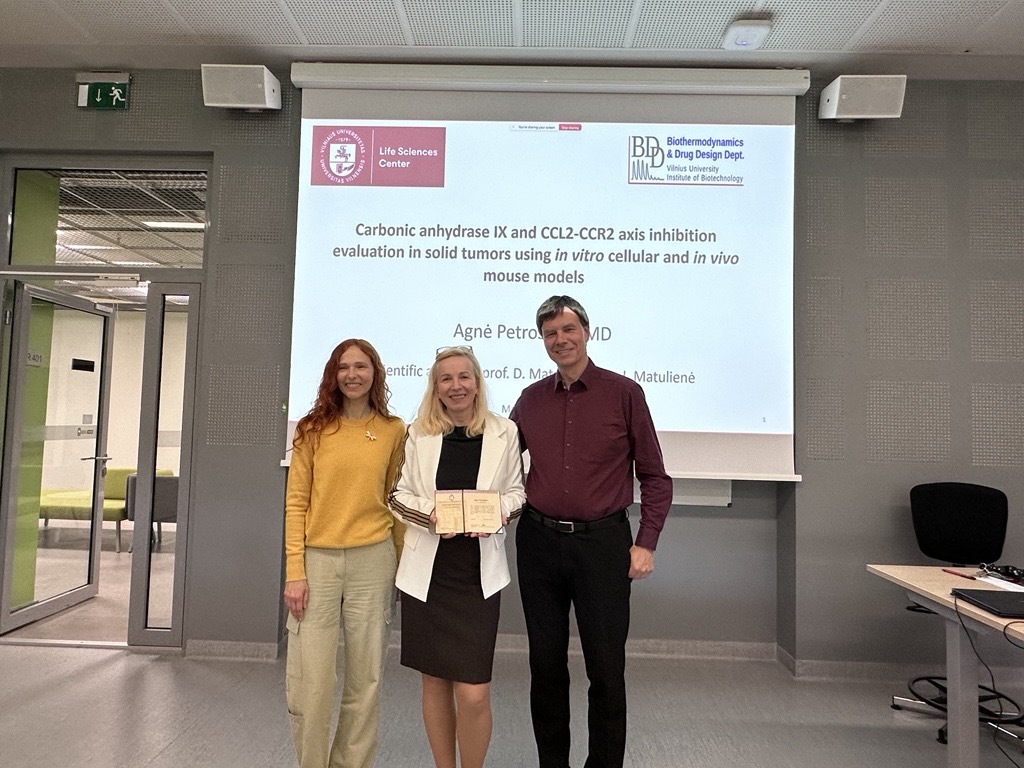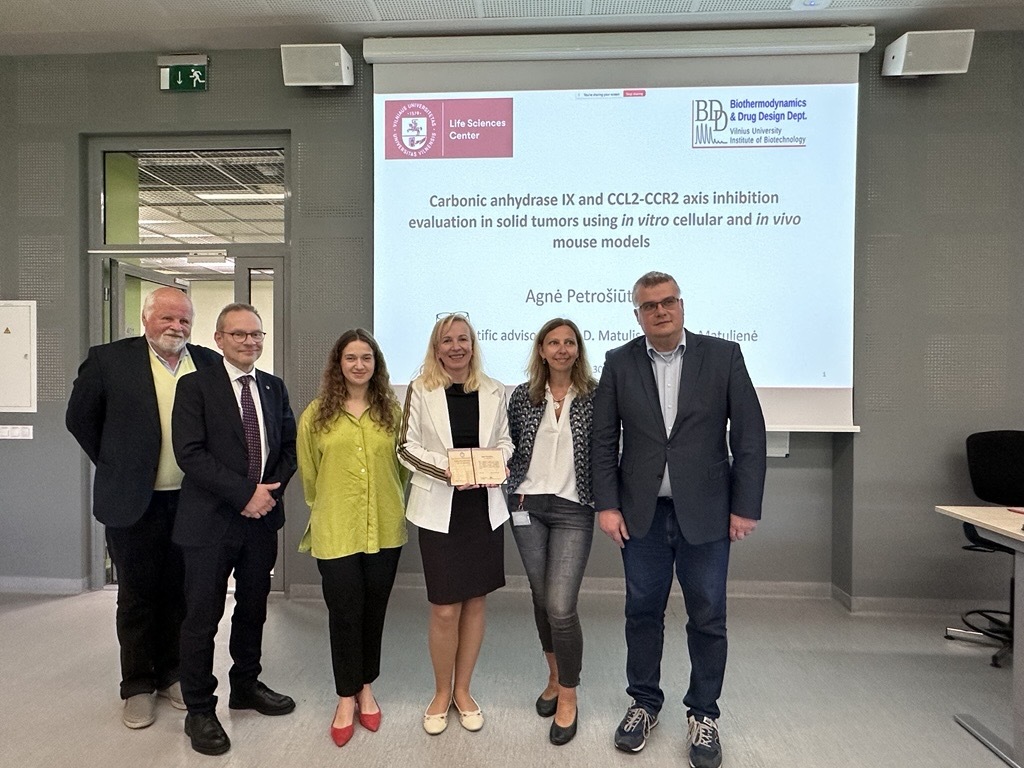Agnė Petrošiūtė has defended her thesis entitled "Carbonic anhydrase IX and CCL2-CCR2 axis inhibition evaluation in solid tumors using in vitro cellular and in vivo mouse models" for the degree of Doctor of Science in Biochemistry.
Scientific consultants: Prof. Dr. Daumantas Matulis (Vilnius University, Natural Sciences, Biochemistry); Dr. Jurgita Matulienė (Vilnius University, Natural Sciences, Biology).
Composition of the Dissertation Defense Board: Chairperson - Dr. Veronika Viktorija Borutinskaitė (Vilnius University, Natural Sciences, Biochemistry); Dr. Arvydas Kanopka (Vilnius University, Natural Sciences, Biochemistry); Dr. Vitalijus Karabanovas (National Cancer Institute, Natural Sciences, Biophysics); Dr. Agata Mlynska (National Cancer Institute, Natural Sciences, Biology); Dr. Seppo Parkkila (University of Tampere, Finland, Natural Sciences, Biochemistry).
Tumors remain one of the leading causes of childhood mortality worldwide. During anticancer treatment, various compensatory mechanisms are activated within tumors that help circumvent the effects of drugs. Tumor hypoxia and the associated extracellular acidosis significantly contribute to cancer progression and treatment resistance. CAIX, a hypoxia-induced enzyme, helps cancer cells survive under hypoxic conditions. The CCL2-CCR2 signaling pathway is essential in forming the tumor immunosuppressive niche. Both the CAIX enzyme and the CCL2-CCR2 signaling pathway are attractive targets for anticancer therapy. Our work investigated the potential of inhibiting these targets in pediatric solid tumor models of osteosarcoma and neuroblastoma.
This is the first study to attempt the combined application of CAIX inhibition and a CCR2 antagonist in an in vivo neuroblastoma xenograft model. We also analyzed the possible use of CAIX-specific compounds conjugated with NIR (near-infrared) dyes for in vivo applications. Our work revealed a multifaceted role of CAIX in tumor and monocyte/macrophage communication. Additionally, we demonstrated that hypoxic conditions alter marker expression in different cell types and reduce the antagonistic effect of CCR2 in an experimental osteosarcoma model.
All these studies may contribute to further developing anticancer therapies and diagnostics targeting the hypoxic tumor niche.
 |
 |
